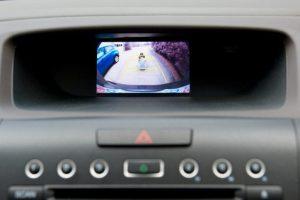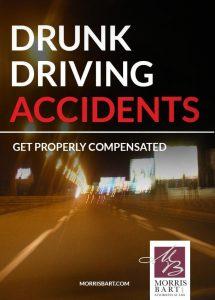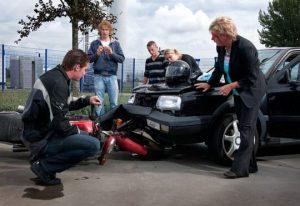
The most important safety features in your car can include essentials such as airbags and anti-lock brake systems, and newer features, such as blind-spot warning and automatic emergency braking. If you are buying a vehicle, reviewing its safety features are among the most important considerations you’ll have. A few key features can provide extra protection in case you are in an accident.
Unfortunately, even the safest vehicles are not immune to collisions. However, knowing the 6 most important safety features to look for in a car may help enhance protection if an accident happens.
Many Safety Features Are Sandard in Most New and Used Cars
Some of the most important safety features are now standard on most vehicles you would purchase. So, even if you cannot afford a brand-new car with all the latest technology, the following safety features may be included and offer enhanced protection while on the road.
Airbags Are a Vital Protection Feature
According to the National Highway Traffic Safety Administration (NHTSA), frontal airbags have saved at least 50,457 lives from 1987 to 2017. Airbags can help prevent brain trauma by stopping the head from hitting the steering wheel, dashboard, or side window. They are supplemental measures designed to be used with seat belts for the highest level of protection.
Head Injury Protection Can Protect Vehicle Occupants from Whiplash
Many modern cars have impact-absorbing material under their headrests’ upholstery to help protect against whiplash and other injuries in a rear-end crash. Additionally, these restraints can offer added protection against brain injuries in an accident.
An Anti-Lock Brake System (ABS) Helps You Control Your Vehicle
If you slam your vehicle’s brakes, the ABS will prevent your wheels from locking, helping you maintain control of the vehicle. Some of these systems include brake assist, which calculates the speed and force of braking in an emergency and activates the ABS faster.
Traction Control and All-Wheel Drive Can Protect from Slipping
A traction control system will stabilize your vehicle if you accelerate too quickly. It controls how much the drive wheels can slip in these situations, usually by automatically adjusting engine power output and possibly applying the brakes. This feature is common in cars with four-wheel ABS.
Cars with all-wheel drive have better traction than with front- or rear-wheel drive because the system distributes power to all wheels.
Electronic Stability Control (ESC) Helps With Steering Issues
ESC helps you maintain control if you suddenly need to steer sharply. If you over- or under-steer, electronic stability control automatically applies the brake to the relevant wheel. As a result, ESC can prevent you from veering off the road, hitting curbs and other objects, and rolling over.
For a free legal consultation, call 800-537-8185
Newer Safety Features Can Offer Enhanced Options for Protection
Today’s passenger vehicle safety features have come a long way, integrating newer technology to offer even more ways to potentially minimize the risk involved in an accident. As a result, according to the NHTSA, the average vehicle on the road in 2012 would have about 56% of a lower chance of fatality for occupants than a vehicle from the late 1950s.
Some of the most important safety features to look for in newer cars include:
- Backup camera: These rearview video systems let you see objects directly behind your vehicle and can help prevent pedestrian and backup accidents. The feature is standard on all cars made after 2018.
- Blind-spot warning: These systems use cameras or sensors to alert drivers when another driver is in the lane next to them, potentially preventing sideswipe or lane change collisions. Many newer cars are offering this standard.
- Forward collision warning: These systems scan the space in front of the vehicle with cameras or lasers and alert the driver if they are approaching an object in their lane too fast, giving them time to avoid a crash.
- Automatic emergency braking: These systems can detect a potential crash and apply the brakes for you if you do not react in time. When combined with forward collision warning, these systems can reduce the chances of many accidents.
- Lane departure warning: These advanced systems can alert drivers when they leave their current lane of travel without using the turn signals by scanning for lane markers using cameras or lasers.
- Lane-keeping assistance: This safety feature, often combined with lane departure warning, can offer light steering assistance to guide you back to your lane if you depart from your travel route without turn signals activated.
While these features can help protect you from being hurt in a car accident, you still need to practice safe driving habits, such as increased awareness and defensive driving. Additionally, while these safety features can increase protection, accidents can happen regardless of your vehicle’s safety features.
Contact Morris Bart, LLC, Today for Help After a Car Accident
Although safety features can provide added levels of protection, car accidents can still leave victims with severe injuries. Regardless of whether your car has the most important safety features, you may be able to seek compensation after a crash.
If you have injuries after a car accident, the Morris Bart law firm office can help with your claim to ensure you get the compensation you deserve after a collision. Call today to schedule your complimentary consultation to learn more about what options you may have to recover compensation after a car accident.
We also conveniently work on contingency, meaning you won’t owe us anything upfront or at all if your case isn’t compensated. You will only be responsible for paying us if we win your case and it is compensated.
Questions?Call 800-537-8185
to find a Morris Bart office near you.





